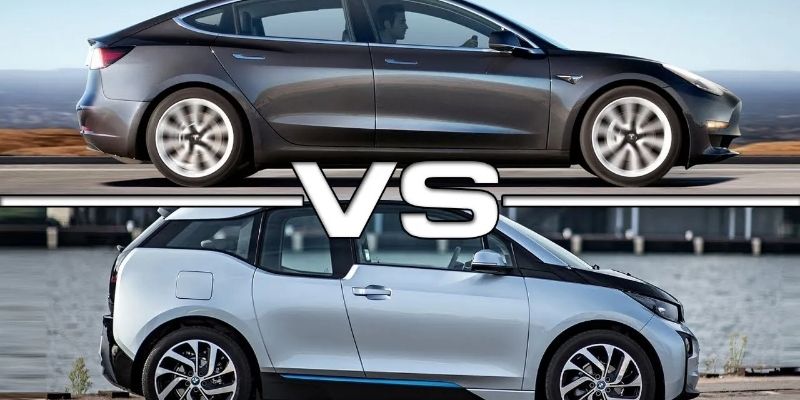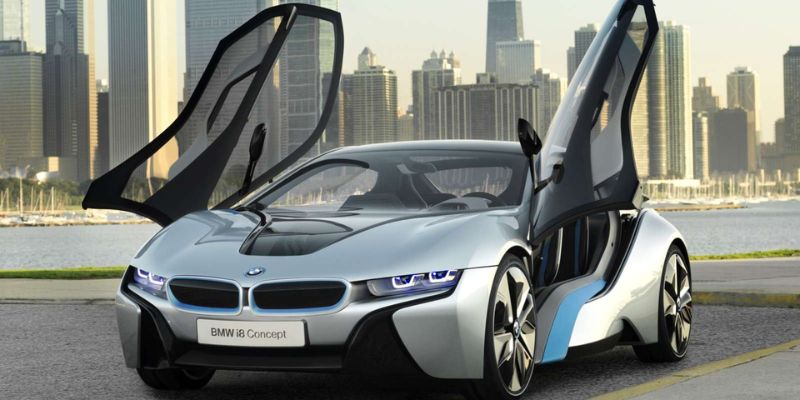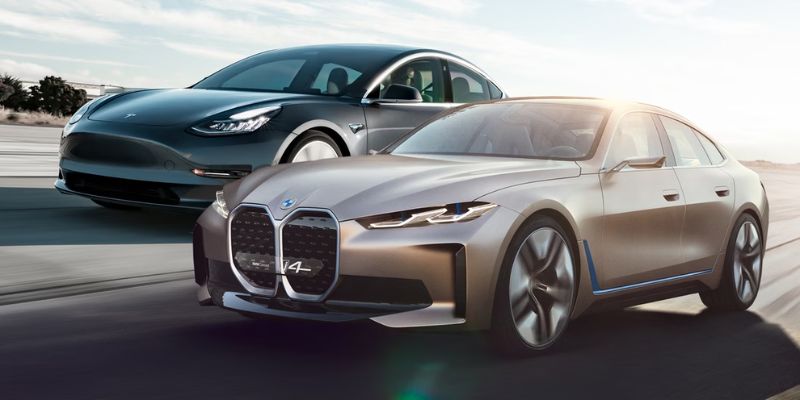Rumors of a potential future partnership between Tesla Motors and BMW have been circulating for some time. A Tesla x BMW vehicle may be on its way to a customer, although this has not been confirmed by an unauthorized Tesla account. The report says the collaborative vehicle will serve as “an alternative to the Volkswagen ID.3 and MG4”.
While the combination of Tesla’s cutting-edge all-electric technology with BMW’s pursuit of solid-state batteries and top build quality may be wishful thinking, it also has the potential to be a combination made in automotive heaven. But what will the model actually look like? And what does the partnership between these two powerful automakers: Tesla BMW Collab mean for the growth of the electric vehicle industry? Come explore with Teslasuggest.
Tesla BMW Collaboration Model

The innovative electric powertrain technology from Tesla and the luxury automotive design know-how from BMW will be combined in this exciting new alliance to provide the best of both worlds. The end result is a partnership strategy that promises to be both fashionable and environmentally friendly, giving drivers a really exceptional driving experience.
What can we specifically anticipate from this new partnership approach, though? Will the hoopla be justified, or is it simply another marketing gimmick? This article will examine the Tesla and BMW partnership concept in more detail, looking at its characteristics, functionality, and overall effect on the car industry. You won’t want to miss this fascinating new breakthrough in the world of electric automobiles, whether you’re a devoted Tesla or BMW fanatic.
Sharing Battery Technology Tesla BMW Collab
In the automobile business, there has been a lot of discussion over Tesla BMW Collab concept. These days, exchanging battery technology is one of the most essential ways these two businesses collaborate. The environment also gains from this partnership in addition to the businesses.
Both Tesla and BMW have been making substantial advancements in the realm of battery technology for many years. The electric car industry has been dominated by Tesla, and BMW has been making electric cars since 2013. These two businesses may lower their research and development expenses by sharing battery technology, which will ultimately result in more reasonably priced electric automobiles for customers.
The ability for both businesses to enhance battery performance is one of the main advantages of sharing battery technology. Tesla batteries are renowned for their high energy density, which gives electric cars greater ranges. BMW, on the other hand, has been focusing on increasing the battery life. Tesla and BMW are able to produce batteries with a high energy density and an extended lifespan by combining their knowledge and experience in this area.
Sharing battery technology helps both businesses to lower their carbon impact, which is an additional advantage. They may use less energy to power their electric vehicles by making more energy-efficient batteries. As a result, less greenhouse gas emissions are generated throughout the production process.
The pooling of battery technology between Tesla and BMW is a big development for the market for electric vehicles. Together, they can produce batteries that are more cost-effective and efficient, which will eventually help customers and the environment.
Tesla BMW Collab: Overview

Two of the most cutting-edge automakers in the world, Tesla and BMW, have teamed together to develop a brand-new electric vehicle (EV) model. A performance-driven electric vehicle (EV), the Tesla and BMW Collaboration Model aims to give an exceptional driving range while contributing to sustainable energy. By combining the production knowledge of BMW with the EV technical expertise of Tesla, this partnership will bring forth the best in both businesses.
In the EV market, BMW and Tesla have long been rivals. However, they both want to increase the general public’s access to EVs. This partnership is a calculated move toward achieving that objective. Together, they may use each other’s advantages and assets to produce a vehicle that is superior to anything each business could have produced on its own.
Built on the current BMW chassis, the Tesla and BMW Collaboration Model will use Tesla’s electric motor and battery technologies. This will enable the car to perform better than BMW’s existing EV versions and have a greater driving range. The partnership extends to the supply chain as well, with BMW overseeing production and Tesla providing the batteries.
The Tesla and BMW Collaboration Model is anticipated to revolutionize the EV industry. Customers who seek an EV that can compete with conventional gas-powered vehicles will find it to be an appealing alternative since it will provide a distinctive blend of performance and sustainability. Additionally, this partnership may lead to the creation of new employment and promote innovation in the automotive sector.
Tesla Model 3 Performance vs. BMW Model Y
Two electric cars that are frequently contrasted with one another are the Tesla Model 3 and the BMW Model Y. Both vehicles are SUVs and are thought of as rivals in the market. The current partnership between Tesla and BMW, however, has allowed the two businesses to work together to develop a new vehicle that incorporates the finest features of each. This section will compare the BMW Model Y with the Tesla Model 3 Performance to see how they compare to one another.
The Tesla Model 3 outperforms all other vehicles in terms of performance. The Model 3’s electric powertrain allows it to go from 0 to 60 mph in only 3.5 seconds. In contrast, the BMW Model Y needs 4.8 seconds to get to the same speed. Additionally, the Model 3 and Model Y also have peak speeds of 162 mph and 135 mph, respectively.
Additionally, the Tesla Model 3 offers a greater range of travel than the BMW Model Y. The Model Y has a range of up to 326 miles, but the Model 3 has a range of up to 353 miles on a single charge. This indicates that while the Model Y is better for shorter journeys, the Model 3 is better for long-distance driving.
Comparing the interiors of the two vehicles, the BMW Model Y feels more opulent than the Tesla Model 3. The Model Y’s interior is roomy and cozy, with premium materials and a modern style. The inside of the Model 3 is less cluttered and has fewer features.
Tesla Batteries & Supply Chain vs. BMW

Tesla has been at the forefront of creating and developing batteries for electric vehicles. The business has made significant investments in R&D to produce cutting-edge battery technology. BMW, on the other hand, has been concentrating on developing automobiles with sustainable energy models. Together, Tesla and BMW have been able to combine their respective capabilities to develop a more effective and sustainable energy model.
Because of its vertically integrated supply chain, Tesla is in complete control of the manufacturing process, from the procurement of raw materials to the final product. By doing this, they are able to exert more control over the quality of their batteries and guarantee that they live up to the high standards that the firm has set. BMW, on the other hand, has a more conventional supply chain structure, which means they depend on vendors to give them the raw ingredients they require.
The car industry has been significantly impacted by the partnership between Tesla and BMW. They were able to develop a more effective and sustainable energy model by pooling their knowledge. BMW has been able to develop automobiles with extended ranges and quicker charge times thanks to the usage of Tesla batteries.
The supply chain has been impacted by the partnership as well. BMW now has better control over the battery quality because to Tesla’s vertically integrated supply chain. As a consequence, the supply chain is now more dependable and effective, which has enabled BMW to save costs and boost the Tesla and BMW Collaboration bottom line.
The partnership between Tesla BMW Collaboration has revolutionized the automotive sector. BMW has been able to develop a more sustainable energy model thanks to the use of Tesla batteries and a more effective supply chain. BMW has benefited from this relationship in two ways: it has helped them save expenses and raise the caliber of their automobiles.
Conclusion
The Tesla BMW collab partnership concept holds the potential to revolutionize the automobile sector. The new car will provide a distinctive driving experience that is safe and connected by combining the greatest technology from both firms. Collaborations like this one will become more crucial as the market for electric vehicles expands in order to promote innovation and development.
